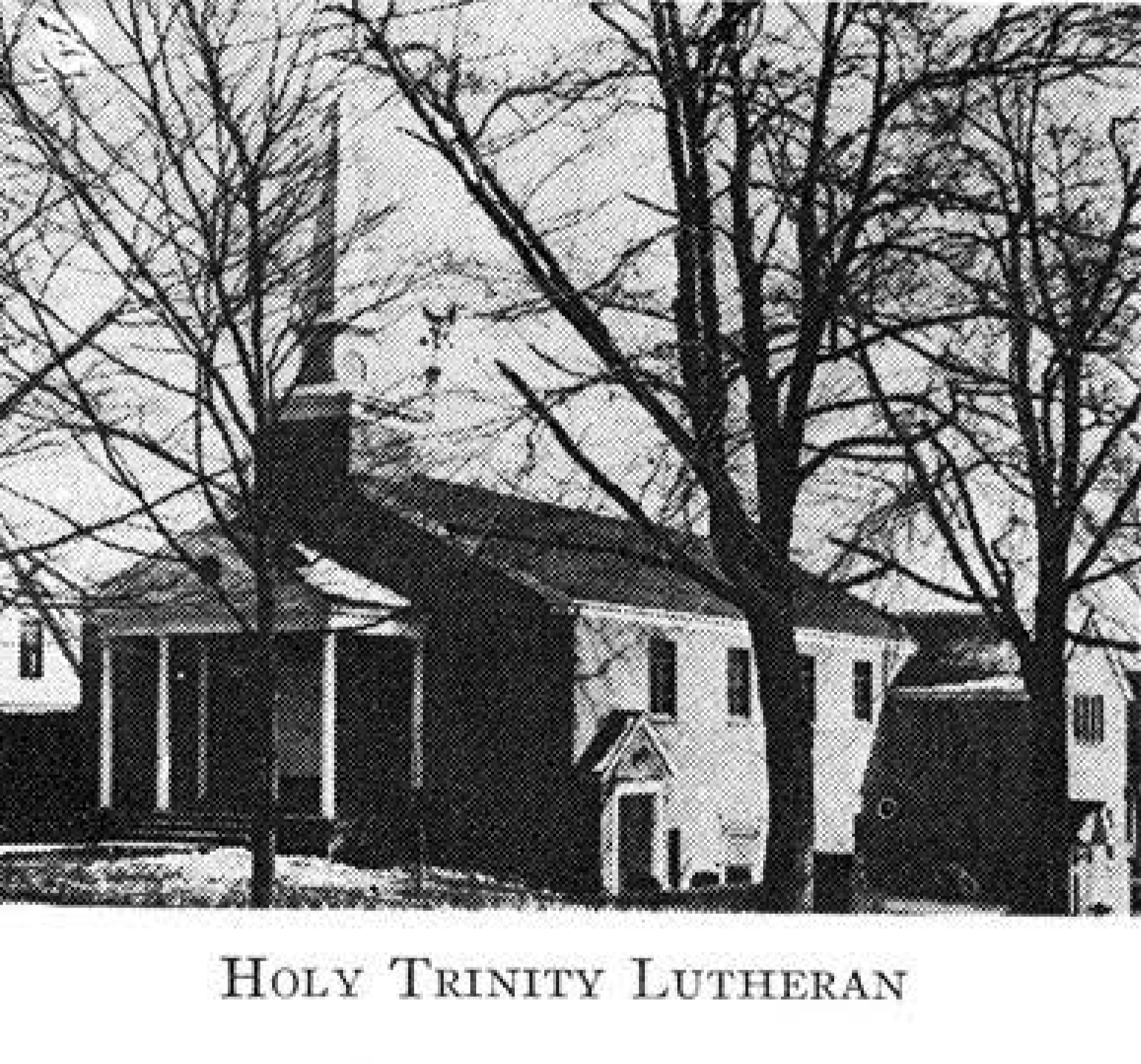HOLY TRINITY LUTHERAN
HOLY TRINITY LUTHERAN Church of Nutley was organized October 16, 1924, as a home mission congregation of the New York and New England Synod (now the United Lutheran Synod of New York).
The first service was conducted in the Masonic Hall and Dr. Samuel G. Trexler, president of the Synod, preached. Reverend James Berg, mission superintendent of the Synod, conducted the service and directed the organization meeting.
Many times in the early years it seemed as though the congregation could not possibly survive. Growth in membership was slow. Frequent changes in the pastorate deprived the young church of the strength of continuing leadership so essential for a church, especially in its formative years. The following pastors served this congregation:
Reverend James Berg served as mission superintendent from October 16, 1924, until April 24, 1926.
Reverend Arthur G. Marcell, the first regularly called pastor, served from May 1926, until July 31, 1927.
Reverend Richard W. Heins supplied the pastorate from September 1927, until December 25, 1927.
Reverend Charles H. Reinbrecht supplied from January 1, 1928, until August 12, 1928.
Reverend Eugene C. Kreider, regularly called pastor, served from December 6, 1928, until September 15, 1930.
Reverend Henry J. Berkobin, the present pastor, accepted a call to the church in August 1930. While completing his work as superintendent of the Brooklyn Inner Mission Society he supplied here from September 15 to December 1, 1930, when he began his full time pastorate with this congregation.
A few months after organization of the church, the place of worship was changed from the Masonic Hall to Town Hall. By May the need for a church building of its own was felt and the present lots at the corner of Hillside and Vreeland Avenues were purchased.
During Pastor Marcell’s brief pastorate a large gothic church was planned and the first unit was built at a cost of $19,428. On completion, the small congregation of about 40 members found itself with the burdensome debt of $19,475, its pastor having resigned and moved to Philadelphia, and a building that was an uninspiring conglomeration of brick, cement, cinderblock walls, and carelessly arranged celotex ceiling. It was as uninviting as a church building possibly could be, yet Pastors Heins, Reinbrecht and Kreider bravely did their best. By the time Reverend Berkobin arrived the membership had grown to 70.
Mr. Berkobin came to the congregation certain that the frequent changes in the pastorate were chiefly responsible for its slow progress. He, therefore determined, “come wind, come water,” to serve at least 10 years in the parish. The steady growth and progress that has attended the congregation during the 30 years of his pastorate demonstrates the importance of a continuing program and leadership.
In spite of the long years of depression the congregation met all of its debt obligations on time, never defaulting once in interest payments or amortization requirements. By 1941 its debt was low enough and its building fund high enough to proceed with revising the original plans, and enlarging and renovating its building, so that it now has “the most beautiful and useful basement church” in the country.
The worship services, educational program and social activities of the congregation were conducted in the completed basement until 1949· In that year the continuing growing congregation literally “raised the roof” to complete the edifice in which it now worships and serves. The unique engineering feat of jacking up the roof and completing the church nave between the basement and suspended roof attracted community wide attention.
The congregation observed the 30th anniversary of its founding by raising a fund with which to make numerous renovations and redecorate the entire building, underwrote the remainder of its debt, and gave sizeable contributions to the Lutheran Welfare Association of New Jersey and Wagner College.
The congregation supports its local and benevolent budget entirely by the voluntary gifts of its members. No money raising functions are conducted and no solicited donations from local tradesmen are sought. The church believes that the support of the church is a spiritual matter and the giving should reflect the devotion of its members to God.
In recent years due to the transiency of people in this area there has been considerable turnover in the membership of the congregation, yet it continues to grow and retain its spirit of dedication to the spiritual purposes for which it was founded.

